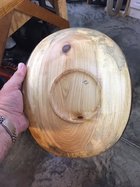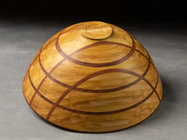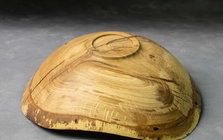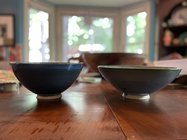I have recently started to draw bowl designs on paper to refine shapes or thrash out ideas before I go to the lathe. I was inspired to start doing this by Derek Hayes book Woodturning design and by Mark Wardle's drawing videos. It has also drawn me to look at ceramic bowls for inspiration and ideas. In doing this I have started to notice some big differences between the rules of thumb I follow and what is seems to be used in ceramic bowls. The first biggest are that ceramic bowls seem to have bases closer to 50% of the diameter rather than the 1/3 diameter I have been using for wooden bowls. The Second is, from what I have seen, ceramic bowls have a sharp curve change near the bottom leading to a flat interior. Flat interior bowl bottoms and curve changes on wooden bowls seems to be frowned upon, so I have avoided it seeking rather for a smooth curve throughout.
I do agree that a smooth curve throughout feels wonderful, so why do not all ceramic bowls have this? Not all of the ones I have are like this, some do have a continuous curve and are nice pieces. They do still have a large foot though. In looking at some eating bowls from Robin Woods book, some of the bowls in it also have this curve change with a flatter interior. Is this a utilitarian choice or is there and way to do this with the piece's artistic value intact?
I am curious as to what others may think on this matter and what rules of thumb are generally used and how they go about doing it.
I do agree that a smooth curve throughout feels wonderful, so why do not all ceramic bowls have this? Not all of the ones I have are like this, some do have a continuous curve and are nice pieces. They do still have a large foot though. In looking at some eating bowls from Robin Woods book, some of the bowls in it also have this curve change with a flatter interior. Is this a utilitarian choice or is there and way to do this with the piece's artistic value intact?
I am curious as to what others may think on this matter and what rules of thumb are generally used and how they go about doing it.




